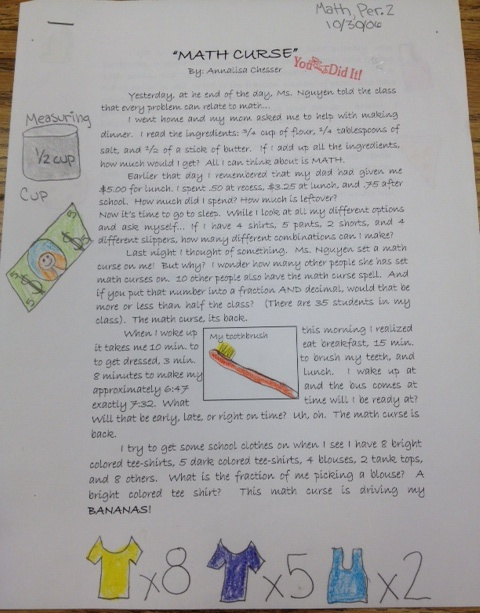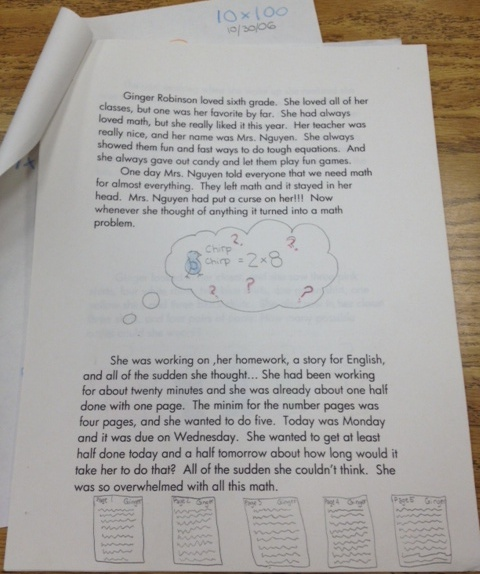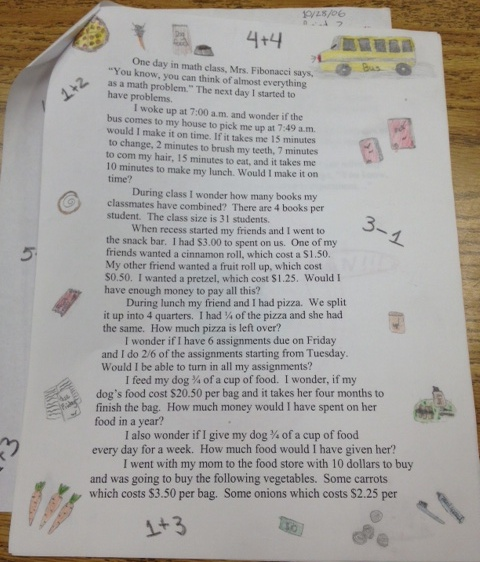Sharing My Favorite Math Books With Students
In my next life, I hope to be able to collect pretty shoes the way I’m collecting math books in this life. Of course I haven’t read them all. Not even close. But just seeing them on the bookshelf makes me happy.
A good book is nothing if not shared.
I always share some of my favorite math books with students. I bring them in so the kids can see the cover, the thinness of it, the fatness of it. “Here’s what the author looks like. Let’s pronounce the author’s name correctly.” I read the book jackets to them. I tell them the year it was published—how many editions so far. We look at the illustrations and say ooh-ahh-wow. I share some of the reviews.
I read at least one or two passages from the book. No matter how old the students are, they love this. They say, “Ooh, goody, story time!” Their eyes are on me. They “curl up” in their hard chairs. They want me to begin.
The latest book is Steven Strogatz’s The Joy of X. I read the first paragraphs of “Loves Me, Loves Me Not” (Chapter 20) to my 8th grade geometry class:
“In the spring,” wrote Tennyson, “a young man’s fancy lightly turns to thoughts of love.” Alas, his would-be partner has thoughts of her own — and the interplay between them can lead to the tumultuous ups and downs that make new love so thrilling, and so painful. To explain these swings, many lovelorn souls have sought answers in drink; others have turned to poetry. We’ll consult calculus.
[...]
To illustrate the approach, suppose Romeo is in love with Juliet but that, in our version of the story, Juliet is a fickle lover. The more Romeo loves her, the more she wants to run away and hide. But when he takes the hint and backs off, she begins to find him strangely attractive. He, however, tends to mirror her: he warms up when she loves him and cools down when she hates him.
I show them the love-hate-relative-to-time graph that follows. Then I say, “Take calculus in high school so you can plot your own Romeo–Juliet graph.”
Later, I have them do a construction from Chapter 13, “Something from Nothing.” Given a segment, or one side of a triangle, construct the other two sides to form an equilateral triangle.
I admit I tend to favor pieces of work that show thoughtful struggle.
All I have to do is read Chapter 0, “Null and Void,” in Charles Seife’s marvelous little book Zero: The Biography of a Dangerous Idea, and the kids are hooked.
Zero hit the USS Yorktown like a torpedo. On September 21, 1997, while cruising off the coast of Virginia, the billion-dollar missile cruiser shuddered to a halt. Yorktown was dead in the water. Warships are designed to withstand the strike of a torpedo or the blast of a mine. Though it was armored against weapons, nobody had thought to defend the Yorktown from zero. It was a grave mistake... Zero was at the heart of the battle between East and West. Zero was at the center of the struggle between religion and science. Zero became the language of nature and the most important tool in mathematics. And the most profound problems in physics—the dark core of a black hole and the brilliant flash of the big bang—are struggles to defeat zero... Instead, zero shaped humanity’s view of the universe—and of God.
My kids remember this when they see a zero in the denominator.
Amir D. Aczel’s Fermat’s Last Theorem makes me cry because it’s so joyous and triumphant.
Learning about the interplay of mathematicians and their conjectures and discoveries to solve this 300-year-old problem leaves me suspended in awe.
I give the kids a quick recount of the story, then I read this passage near the end of the book:
Wiles walked around the department for several hours. He didn’t know whether he was awake or dreaming.
Every once in a while, he would return to his desk to see if his fantastic finding was still there—and it was.
He went home. He had to sleep on it—maybe in the morning he would find some flaw in this new argument.
A year of pressure from the entire world, a year of one frustrated attempt after another, had shaken Wiles’ confidence.
He came back to his desk this morning, and the incredible gem he had found the day before was still there, waiting for him.
We also watched a video on Andrew Wiles—it was our Day 17 in geometry.
A delightful picture book that I read cover-to-cover to my 6th graders is Math Curse by John Scieszka, illustrated by Lane Smith.
After reading the story, our class makes our own Math Curse book. Each student contributes one page by writing and illustrating a day in their life.
These are the covers of 3 books the kids made from 3 different years:
And these are some pages within the books.
We didn’t always make these books. Years ago, we just did Math Curse instead. I adore their Math Curse stories—and I’ve saved them since 2006.
Okay, I'll stop with these 4 books for now. Have you shared a favorite math book with your students lately? Sue shares hers here.




